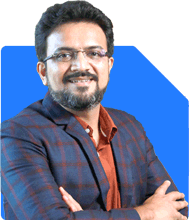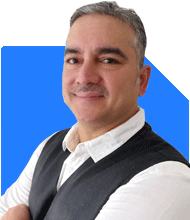Sell Chennai Petroleum at 262?
Samraat Jadhav |2514 Answers |Ask -Follow
Stock Market Expert - Answered on Aug 16, 2024
He is a SEBI-registered investment and research analyst and has over 18 years of experience in managing high-end portfolios.
A management graduate from XLRI-Jamshedpur, Jadhav specialises in portfolio management, investment banking, financial planning, derivatives, equities and capital markets.... more

shall i sell chennai petroleum at 262
You may like to see similar questions and answers below
Jigar Patel | Answer |Ask -Follow
Stock Market Expert - Answered on May 08, 2023
Advait Arora | Answer |Ask -Follow
Financial Planner - Answered on May 11, 2023
Samraat Jadhav |2514 Answers |Ask -Follow
Stock Market Expert - Answered on May 19, 2023
Samraat Jadhav |2514 Answers |Ask -Follow
Stock Market Expert - Answered on May 29, 2023
Samraat Jadhav |2514 Answers |Ask -Follow
Stock Market Expert - Answered on Jul 06, 2023
Ramalingam Kalirajan |10908 Answers |Ask -Follow
Mutual Funds, Financial Planning Expert - Answered on Dec 20, 2025
Ramalingam Kalirajan |10908 Answers |Ask -Follow
Mutual Funds, Financial Planning Expert - Answered on Dec 20, 2025
Naveenn Kummar |237 Answers |Ask -Follow
Financial Planner, MF, Insurance Expert - Answered on Dec 20, 2025
Ramalingam Kalirajan |10908 Answers |Ask -Follow
Mutual Funds, Financial Planning Expert - Answered on Dec 19, 2025
Nayagam P P |10859 Answers |Ask -Follow
Career Counsellor - Answered on Dec 19, 2025
Ramalingam Kalirajan |10908 Answers |Ask -Follow
Mutual Funds, Financial Planning Expert - Answered on Dec 19, 2025
Ramalingam Kalirajan |10908 Answers |Ask -Follow
Mutual Funds, Financial Planning Expert - Answered on Dec 19, 2025
Ramalingam Kalirajan |10908 Answers |Ask -Follow
Mutual Funds, Financial Planning Expert - Answered on Dec 19, 2025
Radheshyam Zanwar |6751 Answers |Ask -Follow
MHT-CET, IIT-JEE, NEET-UG Expert - Answered on Dec 19, 2025
Radheshyam Zanwar |6751 Answers |Ask -Follow
MHT-CET, IIT-JEE, NEET-UG Expert - Answered on Dec 19, 2025


























